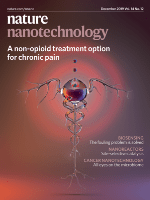
Nature Nanotechnology
metrics 2024
Exploring the Boundaries of Nanotechnology Research.
Introduction
Nature Nanotechnology, published by NATURE PORTFOLIO, stands at the forefront of scientific innovation, focusing on the rapidly evolving field of nanoscience and nanotechnology. With an impressive impact factor and ranking in the top Q1 quartiles across multiple disciplines—including Atomic and Molecular Physics, Bioengineering, and Materials Science—this journal is a pivotal resource for researchers and professionals dedicated to advancing knowledge and applications at the nanoscale. Its diverse scope encompasses cutting-edge research that bridges disciplines, addressing critical challenges in engineering, physics, and biomedical fields. Although the journal currently does not offer an open-access option, readers can access a wealth of information that is vital for anyone involved in pioneering research and development efforts. With its robust editorial standards and a commitment to publishing high-caliber, groundbreaking work, Nature Nanotechnology serves as an indispensable platform for the dissemination of transformative ideas that will shape the future of technology and science.
Metrics 2024
 14.58
14.58 38.10
38.10 39.60
39.60 419
419Metrics History
Rank 2024
Scopus
IF (Web Of Science)
JCI (Web Of Science)
Quartile History
Similar Journals
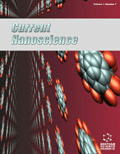
Current Nanoscience
Connecting Disciplines Through Nanoscience InnovationCurrent Nanoscience is a prominent journal published by Bentham Science Publishers Ltd, dedicated to advancing the field of nanoscience through the dissemination of high-quality research and review articles. Since its inception in 2006, the journal has provided a platform for innovative studies across a variety of related disciplines, including bioengineering, biomedical engineering, biotechnology, and nanotechnology, reflecting its diverse scope and interdisciplinary nature. With a Q3 ranking in several categories such as Biomedical Engineering and Pharmaceutical Science and a Scopus percentile ranking around the 60th in its field, Current Nanoscience serves as a vital resource for researchers and professionals seeking to stay abreast of the latest developments and breakthroughs. Although it operates without an open access model, the journal maintains a commitment to enhancing accessibility and relevance in the scientific community. The editorial team is focused on publishing articles that address both theoretical and practical aspects of nanoscience, ensuring that the findings contribute to knowledge and innovation in areas critical to technology and healthcare.

International Journal of Nanoscience
Pioneering Insights in Multidisciplinary NanoscienceThe International Journal of Nanoscience, published by WORLD SCIENTIFIC PUBL CO PTE LTD, stands as a significant platform in the multidisciplinary field of nanoscience and nanotechnology, offering a unique insight into innovative research developments and applications from 2004 to 2024. Based in Singapore, this journal provides an academic space for researchers, professionals, and students to explore the latest advancements across its wide-ranging scopes, which include bioengineering, biotechnology, computer science applications, condensed matter physics, electrical engineering, and materials science. While currently categorized in Q4 quartiles across multiple fields, the journal's commitment to quality research and scholarly discourse positions it as a pivotal resource for driving forward the understanding and application of nanoscience. Despite its non-open access format, the journal invites subscriptions from institutions and individuals eager to stay ahead in this rapidly evolving discipline. By fostering an environment of collaboration and innovation, the International Journal of Nanoscience aims to contribute significantly to the body of knowledge essential for future breakthroughs in science and technology.

Nanomaterials and Nanotechnology
Unveiling the Potential of Nanoscale ApplicationsNanomaterials and Nanotechnology is a premier journal published by HINDAWI LTD, dedicated to advancing knowledge in the rapidly evolving fields of nanomaterials and nanoscale applications. Established as an Open Access platform since 2011, the journal aims to disseminate high-quality research that provides insights into nanotechnology's manifold aspects, including biotechnology, ceramics and composites, as well as electrical and electronic engineering. With a compelling impact factor reflected in its robust Scopus rankings—placing it in the 80th percentile in Engineering and the 72nd percentile in Biotechnology—it stands as a key resource for researchers, professionals, and students seeking to stay at the forefront of innovation in materials science. The journal occupies a distinguished position in the academic community, featuring studies that explore the synthesis, characterization, and application of nanomaterials, thereby contributing significantly to scientific discourse and technological advancement in this critical area.

Journal of Nanoanalysis
Empowering Innovation in NanoanalysisThe Journal of Nanoanalysis is a leading publication in the field of nanotechnology, dedicated to advancing the understanding and application of nanoscale analysis methodologies. Published by BORNA SANJESH KIMIA CO-BSK CO, this journal aims to provide a comprehensive platform for researchers, professionals, and students to disseminate cutting-edge findings and innovative approaches in nanomaterials characterization, nanoelectronics, and related areas. With a focus on high-quality peer-reviewed articles, the journal supports the global scientific community in fostering interdisciplinary collaboration and knowledge sharing. Although currently lacking an explicit impact factor, the Journal of Nanoanalysis is poised to make significant contributions to the field, with its commitment to open access and accessibility globally enriching the pool of research available for academic and practical advancements.

Nanoscale Research Letters
Bridging science and application at the nanoscale.Nanoscale Research Letters, published by SPRINGER, is a leading open-access journal dedicated to the rapid dissemination of innovative research in the field of nanoscience and nanotechnology. Established in 2006, this journal provides researchers and professionals with a platform to share their groundbreaking findings across a broad spectrum of applications, including condensed matter physics and materials science. With an impressive Q1 ranking in both Condensed Matter Physics and Materials Science categories as of 2023, it asserts its position as a top-tier publication within the scientific community, bolstered by a 96th percentile rank in the Scopus database. Nanoscale Research Letters not only emphasizes the importance of nanotechnology research but also ensures that its findings are widely accessible, adhering to its open-access mandate. Scholars and students alike are encouraged to contribute to and engage with this dynamic resource, fostering collaboration and innovation in the ever-evolving world of nanoscience.
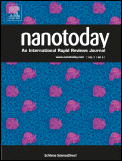
Nano Today
Exploring the transformative potential of nanomaterials.Nano Today is a prestigious journal published by ELSEVIER SCI LTD that stands at the forefront of nanoscience and nanotechnology research. With an impact factor that underscores its significance, this journal has achieved remarkable rankings in several key categories as of 2023, including Q1 positions in Bioengineering, Biomedical Engineering, Biotechnology, Materials Science, and Pharmaceutical Science, making it an essential resource for scholars and professionals alike. ISSN 1748-0132 and E-ISSN 1878-044X, the journal serves as a vital platform for disseminating cutting-edge research findings and innovative applications in the field. Although open access options are not available, the journal's rich repository of peer-reviewed articles provides invaluable insights into the latest advancements in nanotechnologies. Based in the Netherlands, Nano Today not only connects a global network of researchers but also propels forward the conversation on the transformative potential of nanomaterials across multiple disciplines. With a commitment to advancing knowledge and fostering innovation, Nano Today is an indispensable tool for academics and practitioners dedicated to pushing the boundaries of scientific exploration.
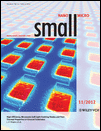
Small
Exploring the Future of Materials at the Nanoscale.Small is a premier academic journal published by WILEY-V C H Verlag GmbH, focusing on cutting-edge research across a multitude of disciplines including biomaterials, biotechnology, chemistry, engineering, materials science, medicine, and nanoscience. With an impressive impact factor and recognized in the top quartile (Q1) across these categories, Small serves as a vital platform for scientists and researchers aiming to disseminate innovative findings and explore the interplay between small-scale materials and their large-scale applications. Enjoying a broad readership, the journal has been key in advancing knowledge from its inception in 2005 and aims to foster collaborations and discussions that steer the future of material science and biotechnology. Though not open access, research published in Small remains invaluable for professionals and students eager to explore the advancements at the nanoscale, promoting a comprehensive understanding of modern scientific challenges and opportunities.

Nano Research
Championing excellence in nanoscale research.Nano Research, published by TSINGHUA UNIVERSITY PRESS, is a prestigious academic journal dedicated to advancing the fields of nanoscience and nanotechnology. Since its inception in 2009, the journal has established itself as a leading platform for the dissemination of high-quality research, evidenced by its impressive Q1 rankings across multiple categories including Atomic and Molecular Physics, Condensed Matter Physics, and Electrical and Electronic Engineering. With an impact that resonates globally, Nano Research not only attracts contributions from renowned researchers but also appeals to students and professionals striving to stay at the forefront of innovation. The journal’s commitment to excellence is reflected in its ranking, placing it in the top echelons of its field, as evidenced by its notable Scopus standings. Researchers can benefit from its rigorous peer-review process and broad scope, encompassing theoretical, experimental, and applied studies. For those passionate about pushing the boundaries of knowledge in the realm of nanotechnology, Nano Research serves as an indispensable resource.
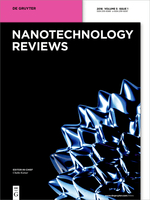
Nanotechnology Reviews
Bridging Disciplines through NanotechnologyNanotechnology Reviews, published by DE GRUYTER POLAND SP Z O O, stands at the forefront of the multidisciplinary field of nanoscience and nanotechnology. With an Open Access model adopted since 2019, this journal, identifiable by its ISSN 2191-9089 and E-ISSN 2191-9097, disseminates vital research that is accessible to a global audience. The journal is located in Germany and has established itself as a premier platform for innovative research, boasting impressive quartile rankings: Q1 across several categories including Biotechnology, Energy Engineering, and Materials Science, as well as a Q2 classification in Biomaterials as of 2023. The diverse scope enables authors to contribute to a range of topics, from biomedical applications to energy solutions and advanced materials, making it essential reading for researchers, professionals, and students passionate about cutting-edge developments. Additionally, with Scopus rankings highlighting its value across various domains and robust percentiles, including 94 in Engineering (miscellaneous), 93 in Medicine (miscellaneous), and 88 in Biotechnology, Nanotechnology Reviews is an influential and respected journal that fosters scientific dialogue and innovation.

BioNanoScience
Advancing the Frontiers of Bioengineering and Nanotechnology.BioNanoScience is an esteemed academic journal published by SPRINGER, dedicated to the interdisciplinary field of bioengineering and biomedical engineering. With an ISSN of 2191-1630 and an E-ISSN of 2191-1649, the journal has established itself as a significant platform for sharing innovative research and developments in nanotechnology as applied to biomedical contexts. Although it operates under a subscription model, the journal maintains a strong impact within its field, achieving a Q3 quartile ranking in both categories for 2023 and has a solid standing in Scopus rankings, where it ranks #129 out of 303 in Biomedical Engineering and #87 out of 162 in Bioengineering. The journal not only aims to publish high-quality research, but also seeks to foster collaboration between scientists, engineers, and healthcare professionals to address pressing global health challenges through nanotechnology. As an essential resource for researchers, professionals, and students, BioNanoScience continues to contribute to the advancement of knowledge and innovation in bioengineering.